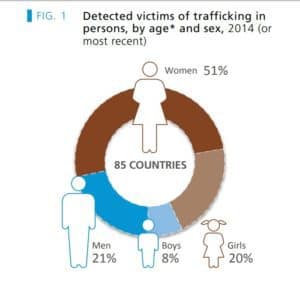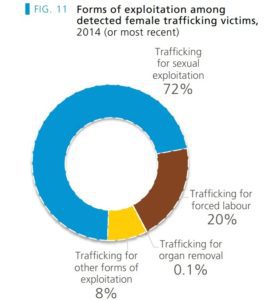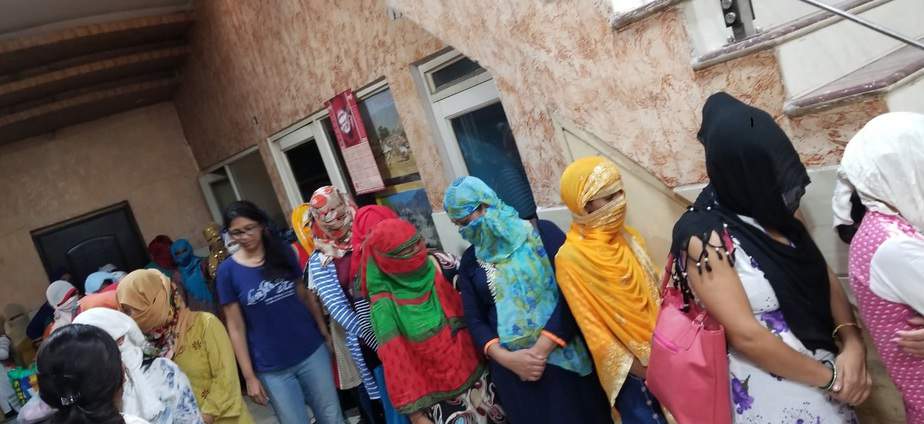Nepal has alerted its airport to prevent trafficked women from being flown out to foreign destinations, whereas the authorities in Delhi have yet to prevent the Capital from being used as a transit point
Three operations conducted in July saw the rescue of 73 Nepalese women from human trafficking rings in the Capital, highlighting the fact that jobs in the city are used as a bait to lure the vulnerable.
Chief of The Delhi Commission for Women Swati Maliwal, who was at core of the rescue work last month, said that Delhi was becoming a ‘Human Trafficking Capital’ of the world. In the first rescue, conducted by Delhi Police and the Varanasi Crime Branch, a private house was raided in Munirka area where 16 women were found.
They were reportedly going to be sold to buyers in Iraq and Kuwait. Maliwal alleged that seven women had already been trafficked out, with two having been sent to Iraq, “while the other five are in Kuwait”. One of them was found to be pregnant. Which begs the question about just why Delhi is being used to send women from Nepal to other countries.

Ravi Kant, President of Shakti Vahini, an NGO working towards combating human trafficking and violence against women and children in the country, says that Nepal’s Tribhuvan International Airport has strong policing and strict rules for leaving the country, which makes trafficking hard. This is why a route to India, with which Nepal shares a visa-free travel, is opted for.
Social activist and co-founder of Shakti Vahini, Rishi Kant adds that after the catastrophic earthquake in Nepal in 2015, Nepal’s security checks became a lot more stringent. This also meant that fake passports, which most of the traffickers provide the women with can be caught. “The women can’t leave for a foreign country on a fake Nepali passport, but from India it becomes much easier”, says Kant. At an Indian airport, the Nepalese fake passport would be harder to detect and the ease with which people can be trafficked grows. What adds to the woes of those trying to detect such cases are the women being majors, “By law, they cannot be stopped from flying out, unless there is an alert in place about them.”
Which is why India’s role to stop such trafficking needs to become stronger. While Nepal is working to prevent people from being trafficked, at least through its air routes, the transit point of India, especially Delhi has not been clogged yet.
However, it is important to note here that while the India route is being used as a transit, it is also a destination for trafficked women. Like in the case of the third rescue, which saw 39 women rescued from a hotel in Paharganj.
In this case the disjointedness between authorities was apparent. MS Randhawa, DCP of central district who was part of the rescue, said that the women had given a statement before police, saying they came to Delhi, on their own will, in search of jobs. DCW chief, Maliwal refuted this claim.
It is well known that women are lured to a bigger city, in these cases to another country, by promise of a good job which will give their families a better life back at home. What they aren’t aware of is the slavery, and exploitation that awaits them.

An award-winning rights worker Anuradha Koirala, who started Maiti Nepal, was quoted as saying that sometimes during rescue operations they are met with angry women, peeved at being stopped to go into a better future. They then have to make the women understand about what the intentions of the traffickers are.
Information on behalf of United Nations Office on Drugs and Crime to Patriot tells that in South Asia about 96% of the trafficking flows are short and medium distance (i.e. within national borders or between neighbouring countries), whereas 4% flows are long distance (i.e. flows of 3,500 km and beyond). With 88% of the detected victims in the region, being those trafficked domestically.
Furthermore, they have found that majority of the victims of trafficking in India are from various states within the country, and also from neighbouring countries such as Bangladesh and Nepal. But they also go on to say that the flow of victims from South Asia is to almost all continents, with victims being detected in at least 35 countries around the globe.
Human trafficking is taking place on a huge scale — be it in the form of sexual exploitation, bonded labour, illegal organ trade, forced marriages or forced begging.
Trafficking is a critical issue that India needs to take seriously to end. On the UNODC platform “Human trafficking Knowledge Portal” established to counter transnational organised crime, the country’s submissions under the case law database, are only 31, the last being in 2012.
The last two cases submitted were one of bonded labour, and the other of a minor girl named M, who was brought to Kolkata from Nepal, with the offer of a job. She was forced to engage in prostitution in AT’s brothel on Mitra Street, Kolkata.
Under Nepal’s submission, there are just two cases, both of sexual trafficking to India. How many more such girls and women are being brought into the country and being subjected to this de-humanising life is not known, with no comprehensive information on trafficking trends and patterns in the region.





